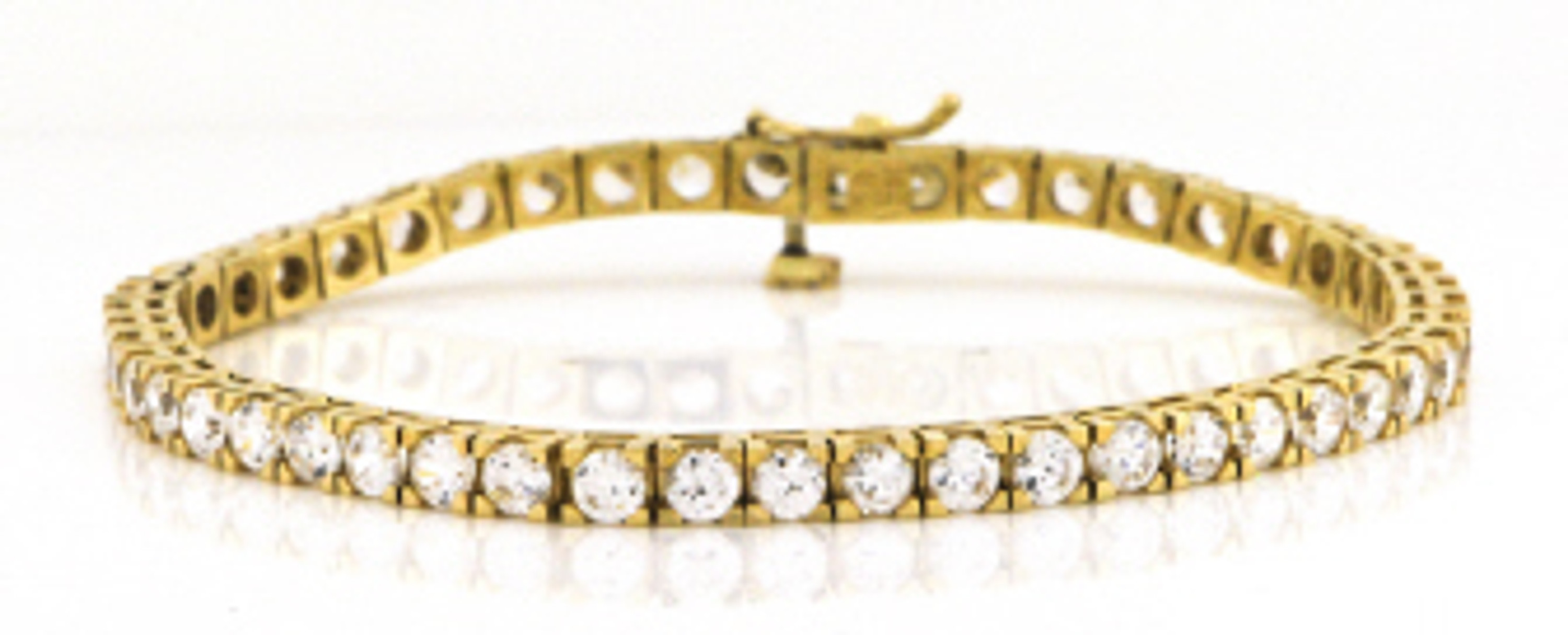Tennis Bracelet Anyone?
Dec 12th 2018
Tennis bracelets were not always called tennis bracelets, but they were always beautiful, popular, and usually made with a thin, symmetrical, well crafted line of securely-set diamonds in yellow gold with a clasp.
They started being called tennis bracelets after world tennis star and diamond bracelet fan Chris Evert had a 'jewelry malfunction' one day out on the court. During an especially rough match in the 1987 U.S. Open, Evert realized she had lost her diamond bracelet and asked officials to stop the game until she could find it.
Since that day, the bracelet has been referred to as a "tennis bracelet" and its popularity has steadily grown.
The elegant bracelets, sometimes known as eternity or inline bracelets, can cost hundreds to even tens of thousands of dollars, depending on the style, size and stone.
Sarraf Jewelry carries an impressive line of tennis and other diamond bracelets, from traditional to fancy and Bezel styles, in white and yellow gold, and Sterling silver.
These simply designed stone bracelets that vary so much in price have become a fashion statement and a 'must have' accessory for many women around the world, making them great gifts for anniversaries, graduations, birthdays or any special occasion.
The classic version of the tennis bracelet has diamonds set in yellow gold, but today there are many more choices, including gemstones such as rubies, garnets and sapphires. Cubic zirconia, a faux diamond, is often used to make the bracelets more affordable.
Following Chris Evert, Serena Williams wore a custom-designed tennis bracelet at last year's U.S. Open. Learning from Evert's experience, she made sure an extra secure safety clasp was added to the bracelet so it wouldn't fall off while she was in action.
For a beautiful tennis bracelet, diamond bracelet, or any gold bracelet, choose from Sarraf, your online jewelry store.


